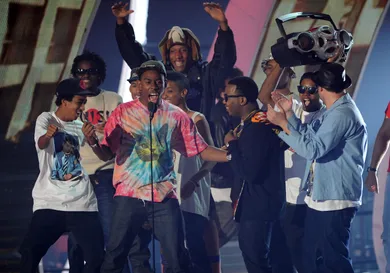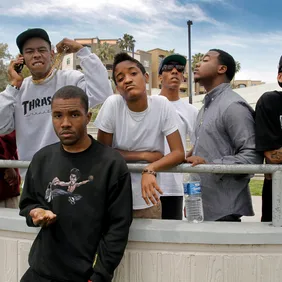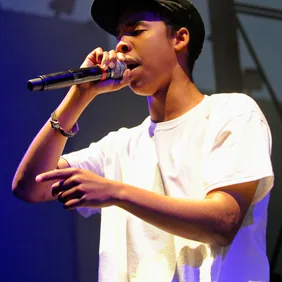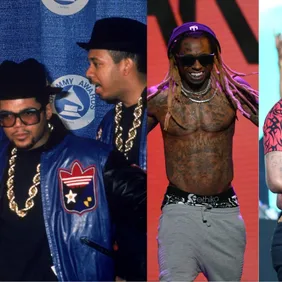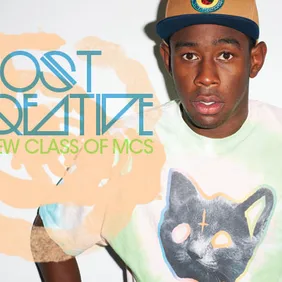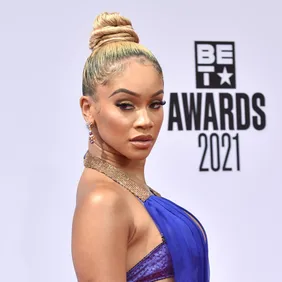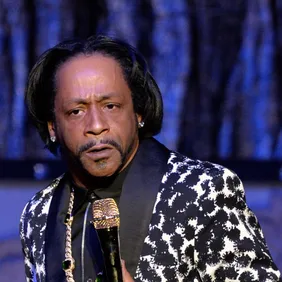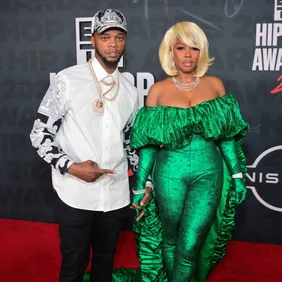For many hip hop fans born in the late 90s and early 00s, being a teenager meant listening to Odd Future. Tyler, The Creator’s “Domo23” was bumping in your older friend’s car. Earl Sweatshirt’s Doris was the soundtrack to smoking weed for the first time. Frank Ocean’s “Thinkin Bout You” captured all the emotions of an innocent crush. The music perfectly encapsulated all the frustrations, feelings and fun of growing up. Their mixtapes Radicals and OF Tape Vol. 2 were download essentials.
Odd Future was birthed out of the changes in hip hop that occurred during the late 00s. In 2007, Soulja Boy had opened up the doors to a new wave of “internet rappers” with his self-made number one hit “Crank That (Soulja Boy).” Kanye West and Kid Cudi redefined what hip hop could sound like with the brooding and minimal 808s & Heartbreaks and Man on the Moon. Lil Wayne became one of the most-respected MCs of all time, with his head-spinning wordplay and killer flows. Pharrell Williams emerged as a versatile hitmaker, working with pop acts like Britney Spears and Gwen Stefani, hip hop legends like Jay-Z and Snoop Dogg, and fronting his own funk-rock charged group N.E.R.D. These artists proved to be major influencers on the sound and look of Odd Future.
Like the Wu-Tang Clan before them, the first thing that stood out about Odd Future was their authenticity. They were not carefully crafted by a record label, or constructed to be anything they were not. OF was just a rowdy group of kids having fun at Syd and Taco’s home studio. They produced their own beats, shot their own videos, and never filtered their content for anyone. Before they were a rap crew, they were just a group of friends – skateboarding, hanging in the mall, doing everything a teenager in LA would do. The organicness of Odd Future was a central aspect of their art. Listening to songs like Tyler and Frank’s “She,” you can imagine them sitting in a living room, writing the lyrics, mixing the beat, and pitching ideas for the music video all on their own. Odd Future’s Do-It-Yourself model inspired an entire generation of independent "Soundcloud Rappers" such as Lil Yachty, Trippie Redd, and Ugly God, as well as “Bedroom Pop” artists such as Cuco, Clairo and Kali Uchis, who quite literally recorded their music on cheap microphones in their bedroom, foregoing studio quality for raw authenticity.
Calling themselves “punk rap” years before that label was used for Soundcloud Rappers, Odd Future was louder, wilder and weirder than anything else out at the time. Their lyrics rebelled against the racism and classicism of white America, with lines like “With nice homes, forty one K's, and nice ass lawns / Those privileged f*cks got to learn that we ain't taking no sh*t” from Tyler the Creator’s “Sandwitches.” They performed their song “Radicals” live with the punk band Trash Talk, who slammed on their instruments while the entire room chanted, “KILL PEOPLE, BURN SH*T, F*CK SCHOOL.” Moshing and stage-diving were notorious at their shows, and the group soon earned a reputation for their concerts bordering on dangerous.
More than just brash, their music was highly diverse, ranging from the heady technical bars of Earl Sweatshirt’s “Whoa,” to the raw melancholy of Frank Ocean’s “Super Rich Kids,” and the seductive vibes of The Internet’s “They Say.” Earl stood out as the group’s true rapping virtuoso, interweaving alternate and internal rhymes into a dizzying string of words that would make MF Doom proud. Frank’s yearning vocals captured the hearts of millions, and his varied production stunned listeners with 70s funk keyboards, EDM synths, and even a John Mayer guitar solo. The Internet meanwhile emerged as one of the most exciting hip hop and R&B live bands since The Roots, playing guitar, drum kit and bass guitar better than any rock band on the scene. Their musicality has only gotten better over the years, as members Syd, Steve Lacey and Matt Martians have made names for themselves as promising solo artists.
OF’s experimental sound and offbeat character earned them the label “alternative rap,” placing them on the forefront of a new wave of hip hop alongside artists such as Childish Gambino, A$AP Rocky, and Vince Staples. These artists pushed new boundaries with cutting-edge music, fashion and videos. They sampled soul and funk like their predecessors, but also electronic house music, psychedelic rock, and Nintendo sound effects. They collaborated on original merchandise with designer fashion brands like Raf Simmons and Guess. They wrote and directed their own TV shows. This time period was an important development and step in our current direction -- for what it means to be a rapper in the post-internet age.
Leveraging the internet to its fullest extent, Odd Future’s videos were a central part of what gave them viral buzz. Tyler created a meme through the video for “Yonkers,” in which he notoriously eats a live cockroach. The group starred in their own Adult Swim sketch comedy show called Loiter Squad, which featured OF members riding bikes off of ramps, drinking pig feet juice, and dancing in the street while wearing Kermit the Frog suits. The iconic “Oldie” video was a simple hand-held shoot of a ten-minute cypher between all 14+ members of OF. The video is nothing more than the crew rapping in front of a blank white wall, but everyone in it is so clearly having so much fun, dancing around and cheering each other on, and spitting genuinely great bars, that it’s easy to watch the entire thing many times over.
Odd Future’s influence was possibly the most visible when simply walking down your high school’s hallway. Everywhere you looked someone was dressed like a West Coast skater kid, with Vans shoes, Supreme hats, and colorful long socks. OF brought skateboards back to the hip hop mainstream at a time in which it was seemingly lost to pop punk bands like Blink-182. Now, skateboarding rappers like Rich the Kid are more popular than ever. Tyler started his own fashion line called Golf Wang, bringing colorful patterned 'streetwear' to the attention of companies like Vogue. He helped make fashion modelling not just acceptable but the norm in hip hop, opening up doors for rappers like Young Thug and Lil Uzi Vert to become fashion icons in their own right.
Today, OF is more or less disbanded, with its members gone on to highly successful solo careers. But their legacy lives on in today’s up-and-comers, such as the 13-member “boyband” BROCKHAMPTON, who produce their own music, shoot their own videos, and create their own branding in much the same way that OF did years before. Earl Sweatshirt has taken under his wing the experimental New York rap crew [sLUms] and their frontman MIKE, whose wordsmith bars and abstract production are directly inspired by Sweatshirt. The LA-based independent film production, clothing design and tour management collective Illegal Civilization has in many ways picked up where Odd Future left off, working with past OF members and promoting new artists like Aminé, Cosmo Pyke, and Rex Orange County.
Tyler, Frank, Earl and Syd were figures to grow up along with. They were confused and figuring things out at the same time you were. The extreme unfiltered emotion of older songs like “IFHY (I Fucking Hate You)” and “Bastard” captured what it felt like to be a young teenager, while the more nuanced lyrics from last year’s Flower Boy and 2016’s Blonde reflect the increased complexity of adulthood. Like many of the most influential artists, the innovations of Odd Future will only become further recognized as time goes on.
